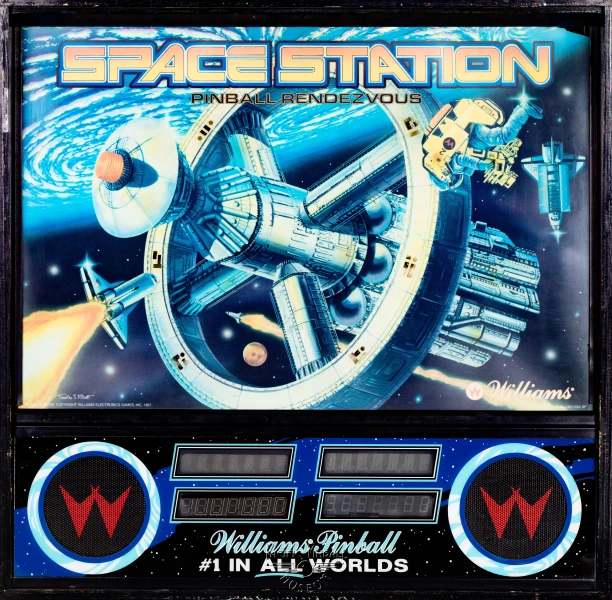Space Station
Space Station Preview Image

Machine Details
Manufacturer
n/a
Year
n/a
Technology Era
n/a
Machine Description
Content Under Review
Help us improve this content
Your support accelerates our content verification efforts.
Support Our WorkSpace Station, released by Williams Electronics in 1987, emerged during a pivotal period in pinball history when solid-state technology was allowing for increasingly complex rule sets and digital scoring. The machine captured the public's fascination with space exploration and scientific advancement of the 1980s, coinciding with the early years of NASA's Space Shuttle program and plans for what would eventually become the International Space Station.
The game's design featured a space-themed playfield with multiple ramps, drop targets, and orbital paths that simulated space flight trajectories. Players could complete various missions and objectives related to space exploration, including satellite deployment and space station docking sequences. The backglass artwork showcased a futuristic space station orbiting Earth, complete with astronauts and spacecraft, reflecting the optimistic vision of space colonization prevalent in 1980s popular culture.
While not as widely recognized as some other Williams classics from the era like High Speed or Pin*Bot, Space Station nevertheless represented an important step in the evolution of space-themed pinball machines. It helped establish many of the conventions and gameplay elements that would become standard in later sci-fi themed pinball games. The machine's solid-state technology allowed for more sophisticated sound effects and electronic displays compared to earlier electro-mechanical games, though it predated the dot-matrix display era that would begin in the early 1990s.